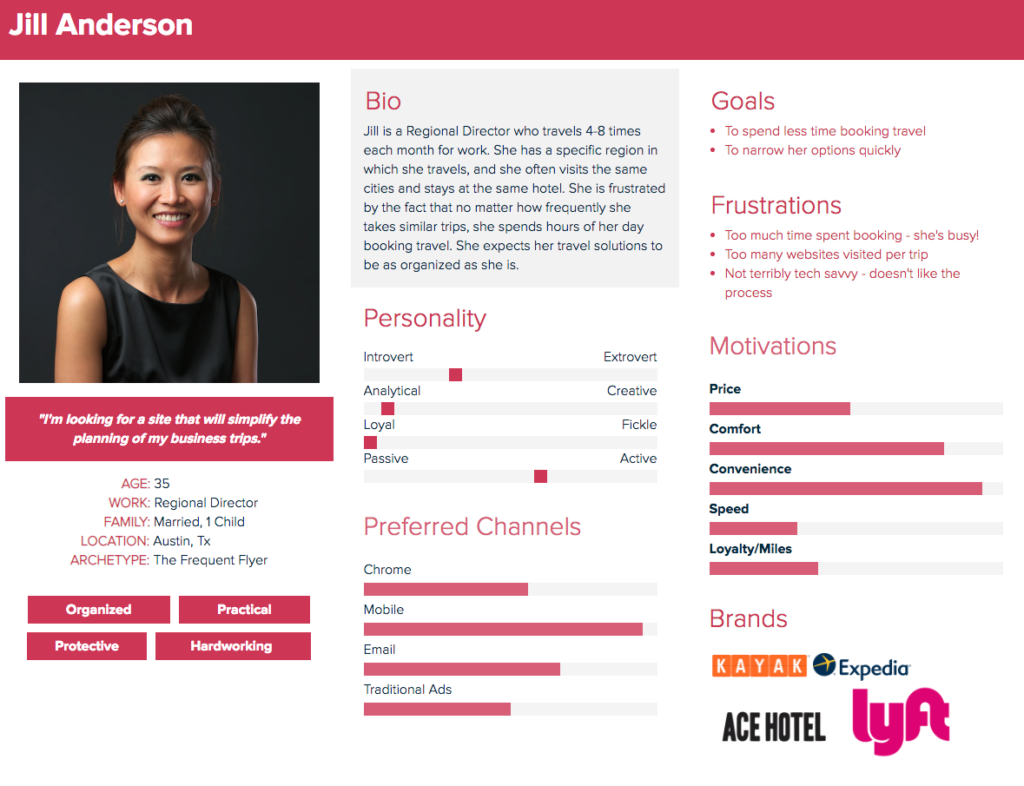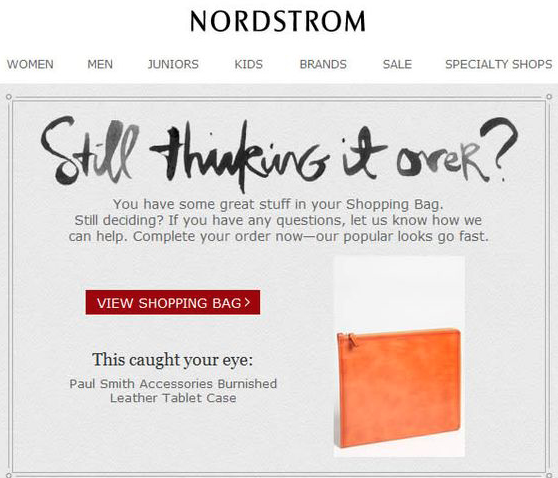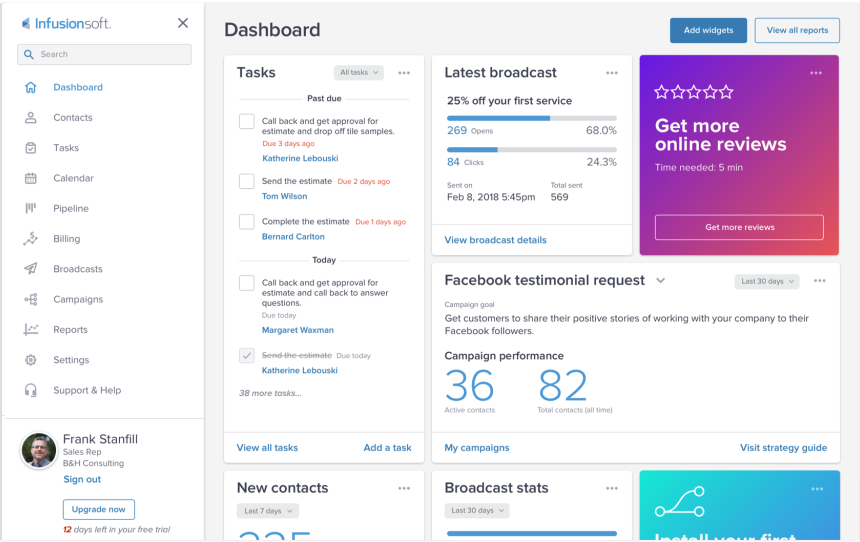‘Segment, segment, segment!’ seems to be a piece of advice that is all over the digital marketing sphere. For a good reason – segmentation makes your marketing efforts more effective and less intrusive. There are several ways you can categorize your customers, and this time we’ll talk about behavioral segmentation.
What is behavioral segmentation?
Behavioral segmentation is the process of categorizing your potential and existing customers into smaller groups based on their purchasing behavior.
Mind it, many marketers confuse different types of segmentation, so let’s run through the basics first. There are for ways to segment the market for your product or service:

- Demographic segmentation – age, gender, life cycle stage (teenage years, adolescence, parenthood, retirement, etc.), income, social class
- Geographic segmentation – depending on your product and offer it can be region, country, state, province, city, or even local neighborhood
- Psychographic segmentation – lifestyle, personality, values
- Behavioral segmentation – occasions, benefits, user status, usage rate, brand loyalty, buyer-readiness stage, and attitude
Each of these segmentations is of tremendous importance for a successful marketing strategy – so no wonder you’ve been hearing about it all over the place.
Why should you segment your market?
The gist of segmentation is to put people with similar needs and interests into one group and develop a marketing strategy that will respond to that specific category.
Even though different people are buying the same product, they are often doing it for different reasons.
For example, somebody needs comfortable sports shoes because they want to run a 20-mile marathon. Another person just wants a pair of trainers for a 30-minute workout. They may both end up buying the same shoe. However, they are more likely buy it if you approach them with a personalized message.
What are the possible pitfalls of segmentation?
When you segment your audience or customers, you want to make sure that this process is based on precise and valid data. If it’s not, you are shotting blanks at the wrong group of customers. I’ve written about this topic in this and this article.
Basically, if you want actionable data that genuinely reflects your customers’ opinions, you have to be a little science-y in your approach. Don’t fret, because it doesn’t take ages to learn and it’s not that difficult. You’ll get the hang of it fairly quickly and the articles I linked to will be a helpful guide.

The second important thing is that your customers change over time. At one point, you can define several buyer personas for your product. If your buyer personas become outdated, you risk sticking to an obsolete marketing strategy. This is why segmentation needs to be a dynamic process.
Back in the day, avoiding these pitfalls required the help of statistics analysts and an entire team of professionals. Nowadays, it takes a couple of marketing software and you’re good to go. Want to see how to make the best of them? Keep on reading.
Introduction to behavioral segmentation
Before we move on to the tools, here’s how you’re going to use them. There are several parameters you can use in the process of behavioral segmentation. Each identified group enables you to create a specific marketing message.
Don’t worry, you don’t have to use all of them – simply figure out what matters for your business. Let’s start.
1. Usage rate
In the first set of data, you’ll be analyzing the frequency of your customer’s need for your product. Your (potential) customers can be divided into:
- Light
- Medium
- Heavy product users
Let’s imagine you created a game. Some people play games once a week. Some gamers play 2-3 times a week. The third group plays on a daily basis and these gamers are likely to make in-app purchases.

The marketing goal is fairly different for each of those groups. Light users need to be convinced to play more often. Your strategy could be focused on showing them that your game is super interesting and worthy of exploration.
With medium users, your goal is to drive them to become regulars – think about offering them perks for playing 7 days in a row. Finally, your goal with heavy product users is to turn them into brand loyalists. For example, your strategy may be offering them discounts and loyalty programs.
2. Occasions
Depending on where you live and what your industry is, you can define special occasions that drive specific sales. Some of these occasions are holidays – Christmas, Halloween, Thanksgiving, Mother’s Day. The occasions can even be seasonal, such as summer or spring.

There are also personal occasions – think about the start of a school year, prom, graduation from college, weddings, employment, etc. Online retailers can target parents with special discount offers on backpacks, notebooks or children clothes in late August, ahead of the of school year.
3. Benefits
This categorization digs a bit deeper than the previous two. In this type of behavioral segmentation, you classify your customers according to the benefits they seek from your product. Is it design? Is it the price? Is it multiple features or a specific one?
This one is a bit trickier because there is no universal formula. You have to think about your product and your market. But it shouldn’t be difficult. Don’t forget that you are also a customer, so think like one for a moment. Say, what do you prioritize when you choose an airline company? Do you just want the cheapest option?

Do you want to travel comfortably, with plenty of leg room, a good meal, and no long lines and delays?

When you do behavioral segmentation based on benefits, you will notice patterns in the customers’ needs and priorities. This is exactly what Lacie Larschan did when she wrote this great article. She put online buyers into six groups based on their website behavior. These groups are:

- The “Price-conscious” customer – a customer who prioritizes low price
- The “Smart” customer – does a lot of research on product features, compares it with other products, goes into great detail in their evaluation
- The “Risk-averse” customer – similarly detail-oriented but somewhat hesitant, needs assurance in the form of solid return policy
- The “Needs-proof” customer – looks for reviews as a proof that the product works well
- The “I’ll get it later” customer – the customer who is dallying and takes plenty of time before the purchase
- The “Persuadable” customer – everyone’s favorite impulsive buyer who will purchase deer antlers at 2AM on Saturday just because the pop-up offer said the shipping was free
4. Buyer-readiness stage
The people you are trying to reach can also be categorized along the lines of consumer decision making process. It typically has five stages:

I spoke at length about the ways to hack this process at each stage, you can give it a read here. Each of these phases requires an entirely different approach – in this article, you will find all the details you need.
5. User status
The grand market for your product and the accompanying strategy for its segments can also be categorized into several groups.
- Nonusers
- Ex-users
- Potential users
- First-time users
- Regular users
You want nonusers to notice you. With ex-users, you may try to figure out what went wrong. If you think about potential users, your goal will be to get them to start using your product. First users have to come back. Finally, with regular users, you will try to convince them to become your brand ambassadors.
6. Loyalty status
One of the important elements of the purchasing behavior is the level of customer’s loyalty towards big brands in your industry. Behavioral segmentation categorizes the customers into:
- Hard-core loyals – customers who stick to one brand
- Split loyals – customers who use two or three brands
- Shifting loyals – customers who shift from one brand to another
- Switchers – customers who show no loyalty to any brand

If your industry is dominated by one or several big brands with a huge following, it can be incredibly challenging to lure customers away from your competitors. You marketing efforts thus need to be focused on differentiating yourself from the competitor. This process often requires a lot of patience and dedication. For example, think of the way Under Armor managed to build a following amid Nike’s dominance.
Which tools do I need for behavioral segmentation?
Behavioral segmentation starts with creating user profiles. No, you don’t need to use imagination to create those. Everything you need is readily available (and once again, check out this article to make sure you’re in compliance with privacy laws):
- Your website analytics
- Browsing history
- Cookies
- Search history
- Purchase history
- Social data
- Login details
- App data
- IP addresses
The greatest challenge of behavioral segmentation begins when you need to connect the dots and turn all this information into actionable insights. For that you need:
1. Lead generation tool
Good lead generation tool doesn’t stop at collecting emails of your potential customers. Good lead generation tool will enable you to learn something about these people in the process and immediately place them into different categories. Quizzes are an increasingly popular way to generate leads and segment them. Think about it. Quizzes are engaging, fun, and if you create them with a specific goal in your mind, they can gather all the data you need from your customers – without being intrusive or intimidating.

Our recommendation:
Check out this article if you want to learn more about the power of quizzes, or go straight to case studies.
2. Marketing automation tool
Marketing automation tool enables you to create custom campaigns tailored to your specific business needs. These campaigns are automatic – all you need to do is set up triggers that start them, create templates for each behavioral segment, and let the software do the work.

Our recommendation:
If you want to learn how you can use EngageBay, here is a detailed article.
3. Customer relationship management tool
These tools are used to maintain customer relationships, as well as collect, organize, analyze data, and manage the customer’s individual records (such as the name, address, email, phone, website, type of customer, and purchase history).

Our recommendation:
If you want to learn more about Infusionsoft’s numerous features, here is a detailed article. You may notice that Infusionsoft incorporates some of the other marketing tools as well.
4. Conversion rate optimization tool
This will enable you to streamline the entire sales cycle by tracking all the customer interactions, automating follow-up, managing your pipeline, and analyzing everything to make sure you’re on the right track.

Our recommendation:
If you want to learn more about Optinmonster, here is a detailed article.
Conclusion
At this point, behavioral segmentation may seem like an overwhelming project, but once you get a little bit of practice, it will become easy. As I said before, you don’t have to segment your audience according to each of these parameters. Go with behavioral segmentation that suits the needs of your business.
Finally, in marketing, there are no one-size-fits-all solutions. There is the theory, and there are great tools that can help you – but the strategy is all yours. If you want a bit of a push, stay on LeadQuizzes blog and check out our suggestions for email and social media campaigns!
Build Your Email List By 100K This Year Using Quizzes